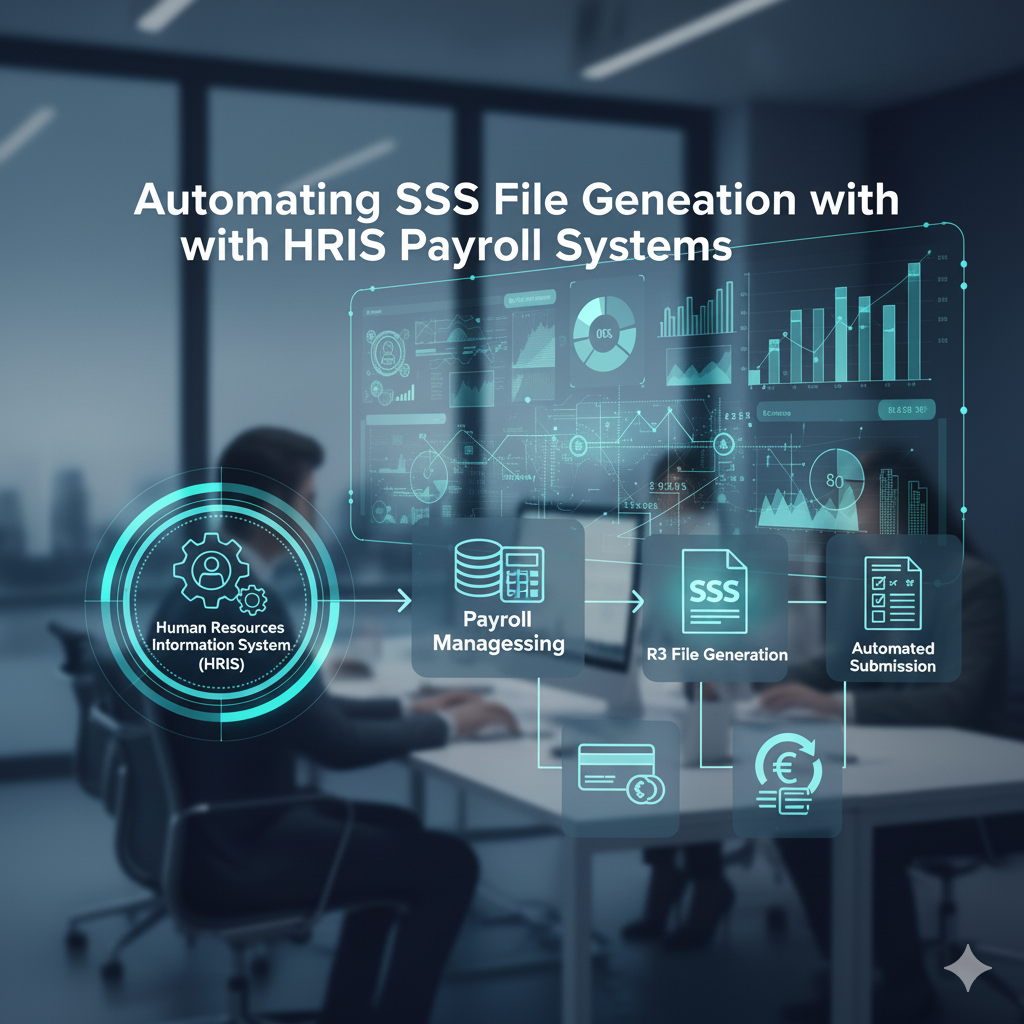For businesses in the Philippines, preparing and submitting SSS R3 files is a critical part of payroll compliance. The SSS R3 file contains detailed contribution records of employees, and errors in submission can lead to penalties, delays, or employee dissatisfaction.
Traditionally, HR and payroll teams manage this task manually, often spending hours encoding, validating, and correcting errors before uploading to the SSS R3 File Generator. However, with modern HRIS payroll systems, companies can automate SSS R3 file generation, saving time, reducing errors, and ensuring compliance.
In this blog, we’ll explore what the SSS R3 file is, the challenges of manual processing, and how HRIS payroll systems transform this process.
What is the SSS R3 File?
The SSS R3 file is a monthly electronic report submitted by employers to the Social Security System (SSS). It details the contributions of employees, including:
- Employee SSS number
- Monthly salary credit (MSC)
- Employer and employee contribution amounts
- Total remittances
This file ensures that employees’ SSS contributions are properly recorded and credited to their accounts.
Challenges of Manual SSS R3 File Generation
Without automation, HR and payroll staff often face:
- Time-consuming encoding – Manually entering employee contribution data into spreadsheets or the SSS R3 Generator tool.
- Prone to errors – A single mistake in an SSS number or contribution can cause file rejection.
- Duplicate work – Updating records in payroll and again in the SSS system.
- Compliance risks – Delays or errors can lead to penalties from SSS.
- Employee dissatisfaction – Delayed posting of contributions affects employee trust.
How HRIS Payroll Systems Automate SSS R3 File Generation
A Human Resource Information System (HRIS) with payroll integration simplifies compliance by automating the entire SSS R3 process.
Here’s how it works:
- Automatic Contribution Calculation: Every payroll cycle, the HRIS automatically computes both employer and employee contributions based on the latest SSS tables.
- Built-in R3 File Generator: The system generates an R3-compatible file that can be directly uploaded to the SSS portal, eliminating manual encoding.
- Error Prevention & Validation: Data such as employee SSS numbers, salary credits, and contribution amounts are validated before generating the file, reducing rejection rates.
- Integration with Employee Records: Because the HRIS manages employee profiles, any changes (new hires, salary adjustments) are automatically reflected in the R3 file.
- Audit-Ready Reports: Employers can easily generate historical contribution reports for compliance checks and audits.
Benefits of Automating SSS R3 File Generation
✅ Accuracy & Compliance: Automated systems minimize human error, ensuring accurate contributions and timely submissions.
✅ Time Savings: HR and payroll staff no longer need to manually prepare contribution reports, freeing them for more strategic tasks.
✅ Employee Trust: Employees see their contributions posted on time, improving confidence in company payroll practices.
✅ Reduced Penalties: Automation prevents missed deadlines and incorrect submissions, reducing compliance risks.
✅ Scalability: Whether you manage 20 employees or 2,000, HRIS can handle R3 file generation without extra effort.
Best Practices for SSS R3 File Automation
- Choose a reliable HRIS: Select payroll software designed for Philippine compliance, including SSS, PhilHealth, and Pag-IBIG integrations.
- Keep employee records updated: Ensure correct SSS numbers and salary information to avoid rejections.
- Train HR staff: Familiarize your team with the HRIS process for generating and uploading R3 files.
- Regular audits: Run periodic checks to verify that contributions match actual payroll deductions.
Conclusion
Automating SSS R3 file generation with HRIS payroll systems is a game-changer for businesses in the Philippines. It eliminates the repetitive and error-prone manual process, ensures compliance, and builds employee trust by guaranteeing timely contribution postings.
For organizations aiming to streamline payroll and compliance, adopting an HRIS with SSS integration is no longer optional—it’s essential.
By investing in automation, you not only save time but also protect your business from costly errors and penalties.

